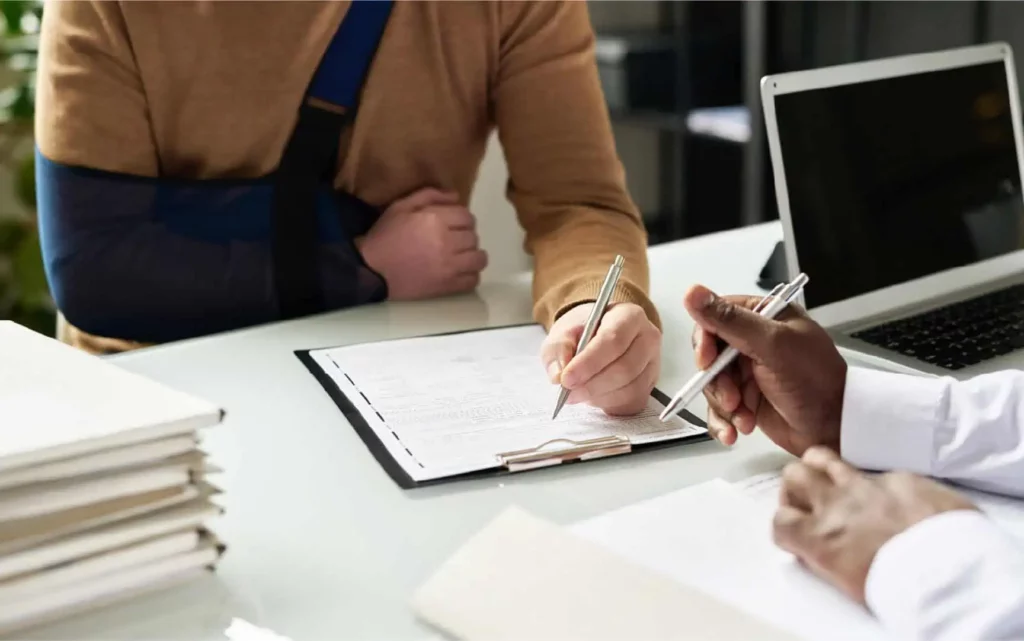Athletic activities bring joy, competition, and a sense of accomplishment to many, but they also come with inherent risks. While some injuries are simply part of the game, others result from negligence or unsafe conditions and may warrant legal action. Understanding who can be held responsible for athletic injuries was crucial for athletes and their families seeking justice. Here’s a comprehensive look at liability in athletic injury cases and the legal options available.
1. When Does Liability Apply in Athletic Injuries?
Liability in athletic injury cases applies when negligence, unsafe conditions, or defective equipment contributes to the injury. Determining liability often requires examining the specific circumstances of the incident and whether reasonable care was exercised to prevent harm.
Key Factors to Consider:
- Was the injury a foreseeable risk of the activity?
- Did negligence or misconduct play a role?
- Were proper safety measures in place?
2. Potentially Liable Parties in Athletic Injury Cases
Athletic injury cases can involve multiple responsible parties depending on the situation. Here are the most common parties that may be held liable:
a. Coaches and Trainers
Coaches and trainers have a duty to ensure the safety of athletes under their supervision. Negligence on their part can lead to injuries.
Examples of Coach/Trainer Negligence:
- Failing to provide proper training or conditioning
- Ignoring known risks or injuries
- Allowing athletes to play with improper or defective equipment
b. Schools and Sports Organizations
Schools, leagues, and other sports organizations are responsible for maintaining safe environments for athletic activities. They may be held liable if their negligence contributes to injuries.
Examples of Liability:
- Unsafe playing fields or facilities
- Inadequate emergency medical procedures
- Hiring unqualified staff
c. Equipment Manufacturers
Defective sports equipment can cause severe injuries, and manufacturers may be held responsible under product liability laws.
Examples of Defective Equipment:
- Helmets that fail to protect against impact
- Faulty protective gear
- Improperly labeled or tested equipment
d. Event Organizers
Organizers of athletic events must ensure that participants and spectators are safe. They may be held liable if their negligence leads to injuries.
Examples of Negligence:
- Poor crowd control measures
- Failing to address hazards on the field or course
- Inadequate safety protocols during the event
e. Fellow Participants
In some cases, a fellow participant may be held liable if their reckless or intentional actions cause injury.
Examples:
- Excessive aggression beyond the scope of the sport
- Violating established rules that lead to harm
3. The Role of Waivers in Athletic Injury Cases
Many sports organizations require participants to sign waivers acknowledging the inherent risks of the activity. While waivers can limit liability, they do not protect against gross negligence or willful misconduct.
Important Notes:
- Waivers must be clear, specific, and legally enforceable.
- They do not shield parties from liability for unsafe conditions or negligence.
- Consult a lawyer to determine if a waiver impacts your case.
4. Proving Liability in Athletic Injury Cases
To hold a party liable for an athletic injury, the following elements must be proven:
- Duty of Care: The defendant had a responsibility to ensure the safety of the participant.
- Breach of Duty: The defendant failed to meet their duty of care through negligence or misconduct.
- Causation: The breach of duty directly caused the injury.
- Damages: The injury resulted in measurable losses, such as medical bills, lost wages, or pain and suffering.
Evidence Needed:
- Medical records and reports
- Witness statements
- Expert opinions (e.g., safety consultants or medical professionals)
- Documentation of unsafe conditions or defective equipment
5. How a Personal Injury Lawyer Can Help
Navigating the complexities of liability in athletic injury cases requires legal expertise. A personal injury lawyer can:
- Investigate the Incident: Identify liable parties and gather critical evidence.
- Negotiate with Insurance Companies: Ensure you receive fair compensation for your injuries.
- Represent You in Court: Advocate for your rights if a fair settlement cannot be reached.
Conclusion
Athletic injuries are often unavoidable, but when negligence or unsafe conditions contribute to harm, it’s important to seek justice. Understanding liability and holding the responsible parties accountable can provide financial support for recovery and prevent future incidents.

